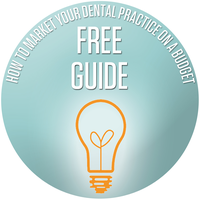
Inflation is challenging both dentists and patients, but presents new opportunities
Key takeaways:
- The cost of dental care for patients has risen, but only by 1.7 percent
- People are still spending on necessities
- Patients are missing dental visits - 48 percent with insurance and 65 percent without insurance
- Staffing and supply costs are rising
Inflation has impacted all of us. Food prices have increased dramatically, rent prices are unsustainable, and energy bills keep climbing. As a dental provider, you are running a business that is seeing increased overhead costs. Perhaps your patient visits are becoming rare, too.
Financial pressure is coming from internal and external factors. The “great resignation” and corresponding wage increases mean staffing costs have risen even faster than the inflation rate, and logistic disruptions are raising supply costs.
Changes in inflation can certainly deter patients from seeking care. Cost is always a consideration but now money must be diverted to pay for housing and food. Even when inflation is lower, people already have excuses not to visit the dentist like a fear of pain or downplaying their teeth issues. With that in mind, the cost of care has only risen about 1.7 percent, but many have skipped visits – 48 percent for the insured and 65 percent for the uninsured.
It is a perfect storm. So, how do you keep your dental practice profitable amid rising inflation? You cannot reduce supplies or lessen care quality and you should keep convenient office hours. Continue reading to see how you can weather the storm and create opportunities to increase profitability long-term as dental inflation ensues.
- Invest in your existing patients
Attracting new patients can be challenging, so start with your current patient roster. Rewarding loyalty helps your customers feel valued and may increase their visits. It can also lead to more referrals.
Rewards can come in the form of free dental product samples. These cost nothing but if you decide to invest money in rewards, like say branded swag, you will want to give items that will not hurt the bottom line.
- Try teledentistry
An online dental visit sounded unrealistic a few years ago before the pandemic changed everything. While teledentistry is not suitable for every dental health matter, like teeth cleaning or filling a cavity, you can use it to:
- Assess an orthodontic appliance
- Perform a virtual intake appointment
- Prescribe medications such as antibiotics for pain relief
- Give advice on after-surgery care
- Evaluate compliance with treatments
Teledentistry is also a helpful way to keep in touch with patients who do not have time to visit your practice regularly. You can evaluate oral health concerns virtually, including damaged teeth, diseased gums, tooth decay, enamel wear, and gum recession. If teledentistry is new to you it is easy to get the hang of.
- Reduce waste
Sustainability practices can be easy to integrate and will allow you to help your patients and the environment. By emphasizing your sustainability, you can bring in new patients. Here are some ideas to get you started:
- Use steam sterilization instead of chemicals.
- Instead of traditional X-ray film, use digital technology. This can save you more than $8,500 annually
- Buy as many supplies as you can in bulk
- Recycle dental instruments
- Switch to compostable items such as rinse cups
- Use cloth sterilization wraps, reusable cloth patient bibs, and non-toxic line cleaners
- Promote electronic delivery for invoices, as well as digital appointment scheduling and confirmations
Waste is not just in the form of tangible objects, either. There is also wasted time. How much of your practice’s time is spent calling patients to make or remind them of appointments? You can automate calls that urge patients to make routine appointments – this can mean an additional $95,000 of annual revenue.
4. Boost production and track proposed treatmentsThere are countless ways to increase production at your practice. Try doing some procedural time studies, and creating a new schedule based on them. You will be able to increase your speed and efficiency once you know how long procedures take, along with the time it takes for safety measures like disinfecting chairs.
You can reactivate patients without an upcoming appointment. Also assign staff to track proposed treatments in the patient’s chart. Then you can generate reports on patients who need treatment and are not yet scheduled. Another option to consider is combining care treatments into a single visit. This helps increase revenue per appointment, while reducing spending on operating hours, staff, and supply costs.
5. Focus on your team
Provide cross-training for busy times and when staff members are out of the office. Be sure to show appreciation for everything they do and include them in the decision process. They might have some great ideas to save money or improve efficiency.
It is key to make sure your employees are satisfied to improve retention. According to the ADA, 4 out of 10 practices are hiring dental hygienists and assistants each month. To add to that, around 34% of dental assistants and 31% of dental hygienists plan to retire in the next five years. Higher wages help but flexible working conditions and more comprehensive compensation packages can go even further. Show that you care.
Inflation can be overwhelming. It is essential to stay focused to protect your practice. The market will not be this way forever and some of the things you put in place now will help secure your future.
Solstice is committed to bringing more patients to your door and we look forward to supporting you during these challenging times.
Want to join the Solstice network? Connect with our dedicated provider relations team for more information about joining our network. You can call 1.877.760.2247 or email providerrelations@solsticebenefits.com.
Already in the Solstice network? Search to see if you're part of the Solstice dental PPO or HMO network. You can also go to https://www.mysolstice.net/ or call us at 1.877.760.2247.



